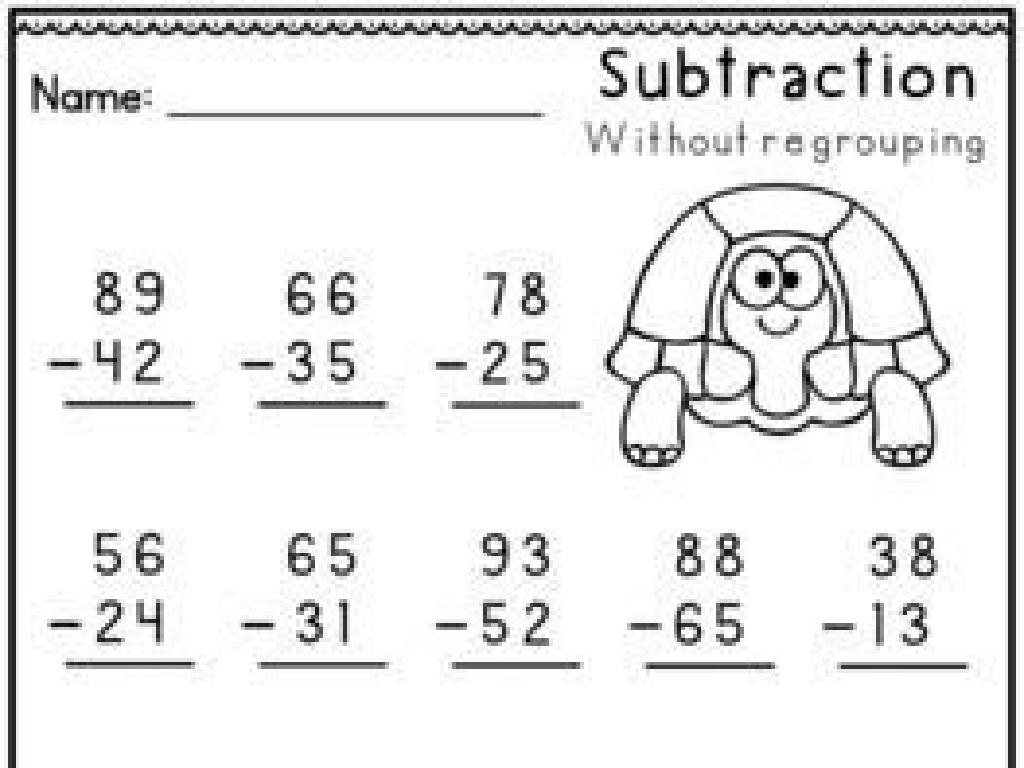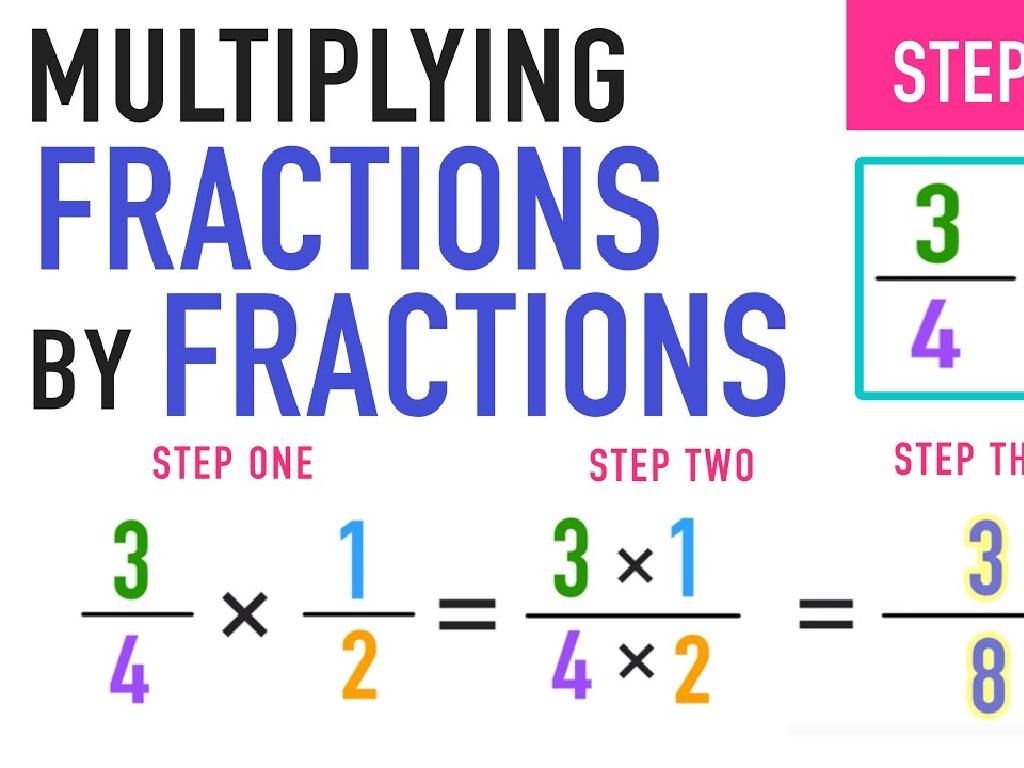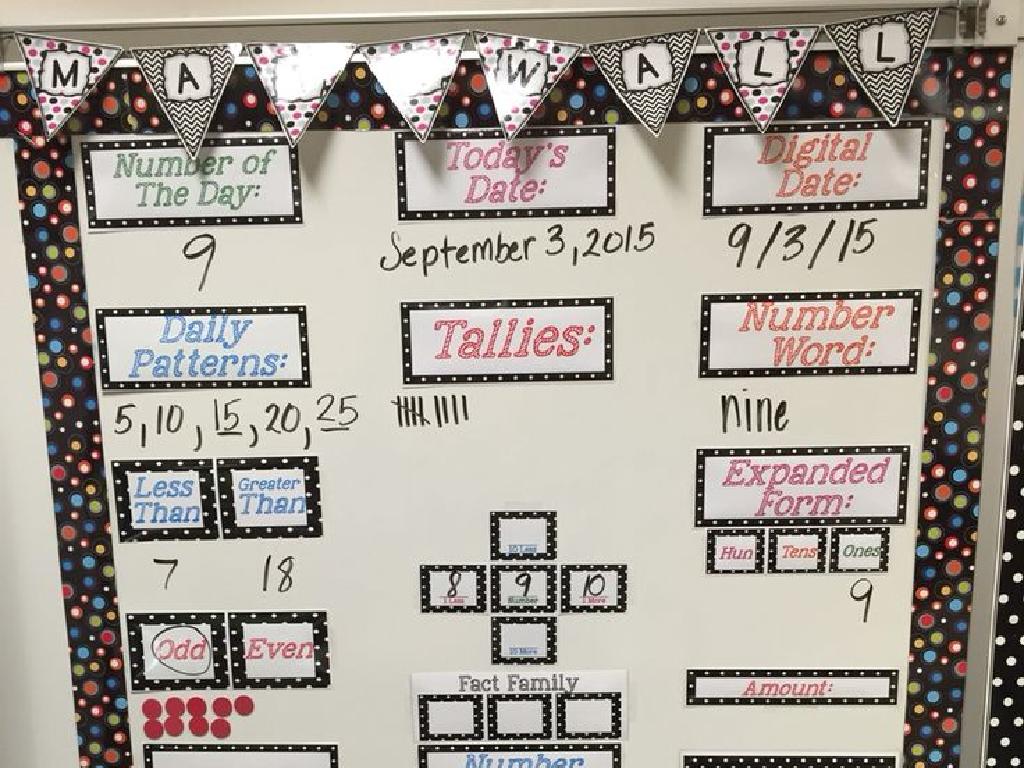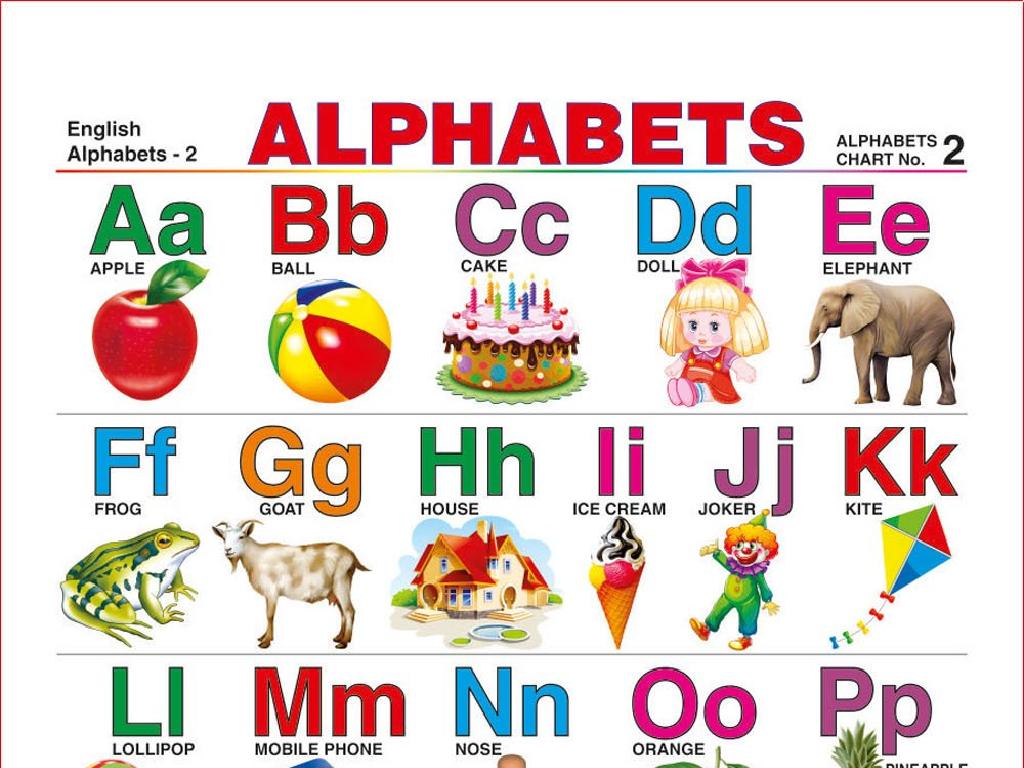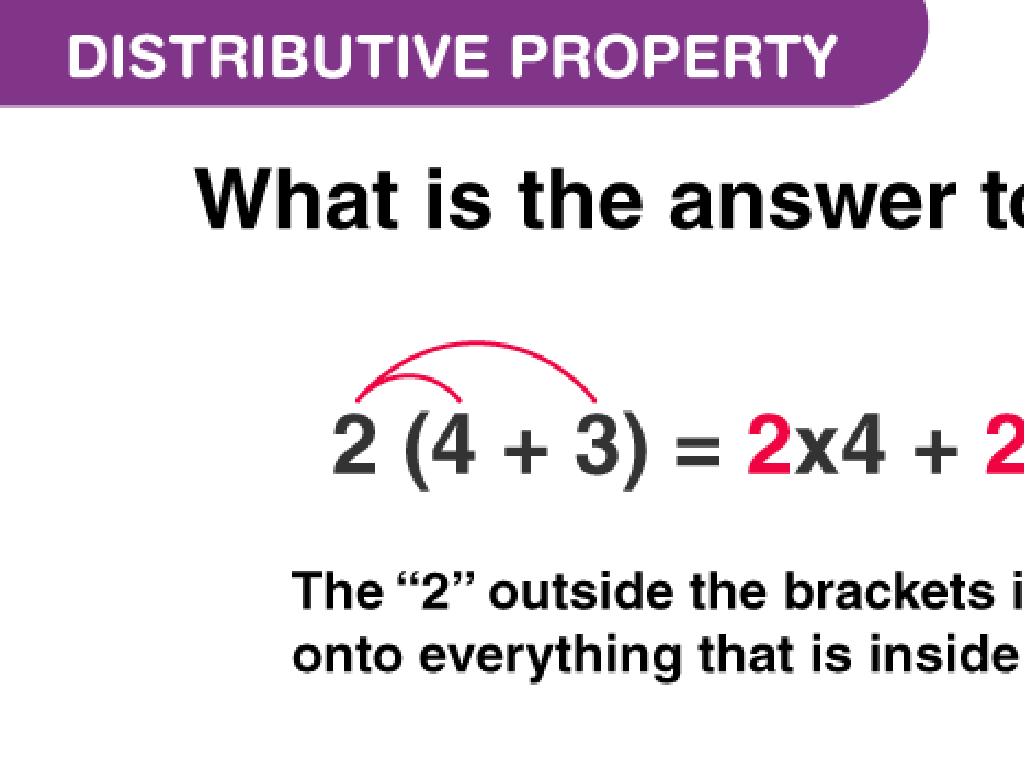Match Antonyms To Pictures
Subject: Language arts
Grade: Kindergarten
Topic: Synonyms And Antonyms
Please LOG IN to download the presentation. Access is available to registered users only.
View More Content
Learning About Opposites: Antonyms
– Antonyms are opposite words
– Like ‘hot’ is opposite to ‘cold’
– Opposites help us describe things
– ‘Big’ and ‘small’ are antonyms
– We’ll match words to opposite pictures
– Find the picture showing ‘quiet’ if you have ‘loud’
– Fun with antonyms!
– We’ll play games to learn antonyms
|
This slide introduces the concept of antonyms to Kindergarten students. Start by explaining that antonyms are words with opposite meanings, such as ‘hot’ and ‘cold’. Emphasize how knowing opposites can help us describe the world around us more accurately. Engage the students with an interactive activity where they match words to pictures that illustrate the opposite meaning. For example, show a picture of a loud drum and have students find the word ‘quiet’. Incorporate games and activities that reinforce the concept of antonyms, making the learning process enjoyable and memorable. Encourage students to think of opposites and share them with the class.
Learning Antonyms with Pictures
– Antonyms are opposite words
– Examples: Hot – Cold
– Opposite of hot is cold, like ice and fire
– Examples: Big – Small
– Opposite of big is small, like an elephant and a mouse
– Examples: Happy – Sad
– Opposite of happy is sad, like a smiling face and a frowning face
|
This slide introduces the concept of antonyms to Kindergarten students using simple, relatable examples and visual aids. Start by explaining that antonyms are words that have opposite meanings. Use everyday examples and corresponding pictures to illustrate the concept. For instance, show a picture of ice and fire for hot and cold, an elephant next to a mouse for big and small, and a smiling face next to a frowning face for happy and sad. Encourage the students to come up with their own examples of antonyms and think of pictures that could represent these opposites. This activity will help them understand the concept of antonyms in a fun and engaging way.
Antonym Matching Game
– Play a matching game
– Look at each picture
– What do you see? What could be the opposite?
– Find the opposite word
– If you see ‘day’, the antonym could be ‘night’
– Antonyms are opposites
|
This slide introduces a fun and interactive game for Kindergarten students to learn about antonyms by matching them with pictures. The activity is designed to help students understand that antonyms are words with opposite meanings. Show pictures that represent simple concepts like ‘hot’, ‘full’, or ‘happy’, and guide the students to think of and match the opposite word, such as ‘cold’, ’empty’, or ‘sad’. Encourage the children to say the antonyms out loud and use gestures or facial expressions to reinforce the meaning. This activity will not only enhance their vocabulary but also their understanding of the concept of opposites in a memorable way.
Matching Antonyms with Pictures
– Understand antonyms through pictures
– Say what you see in the picture
– Look at the image and describe it out loud
– Think of the opposite word
– Use your imagination to think of an opposite
– Example: Sun (hot) vs. Snow (cold)
– Hot and cold are opposites, like sun and snow
|
This slide is designed to introduce Kindergarten students to the concept of antonyms by using visual aids. Start by explaining that antonyms are words that have opposite meanings. Show them pictures and guide them to say what they see, then to think of and say the opposite. For instance, display a picture of the sun and explain that it represents something hot; then show a picture of snow to represent cold. Encourage the children to participate by thinking of their own examples. This interactive approach helps young learners grasp the concept of antonyms in a fun and engaging way. Make sure to praise their efforts and correct gently, reinforcing their understanding with positive feedback.
Practice Time: Matching Antonyms
– Let’s find opposites in pictures
– Look at each picture carefully
– Think of the antonym for each
– If you see a picture of a full cup, the antonym could be an empty cup
– Ready to match them up?
|
This slide is designed for an interactive class activity where students will practice identifying antonyms through pictures. The teacher will show pictures to the class, and the students will think of the opposite of what they see (antonyms) and match them accordingly. For example, if the picture is of a ‘light’ room, students should find a ‘dark’ room. If the picture is of a ‘happy’ face, students should find a ‘sad’ face. This activity will help reinforce the concept of antonyms in a fun and engaging way. The teacher should prepare several pairs of antonym pictures in advance and ensure that each student gets a turn to participate. Additional activities could include drawing antonym pairs, using blocks to represent opposites like ‘high’ and ‘low’, or even acting out antonyms with body movements.
Class Activity: Antonym Hunt
– Explore the classroom for antonyms
– Match opposites with objects/pictures
– Example: Full cup – say ’empty’
– Find a picture of a full cup and the opposite is ’empty’
– Share your findings with the class
|
This interactive activity is designed to help Kindergarten students understand the concept of antonyms by physically searching for them in their immediate environment. Encourage the children to look around the classroom for objects or pictures and think of their opposites. For instance, if they find a picture of a dark night, they could say ‘bright’ for daylight. Provide guidance and ensure each student participates. Possible variations of the activity could include finding a picture of a heavy backpack and saying ‘light’, or spotting a closed door and finding the antonym ‘open’. This hands-on approach aids in solidifying their grasp of antonyms in a fun and engaging way.
Reviewing Antonyms with Pictures
– Recap on antonyms learned
– Matching opposites for understanding
– Opposites like ‘hot’ and ‘cold’ show how antonyms work.
– Celebrating our antonym hunt success
– Remember how we found ‘big’ and ‘small’ in our classroom hunt?
– Looking at pictures with opposites
– We’ll see images like a ‘full’ jar next to an ’empty’ one.
|
This slide is meant to consolidate the knowledge the students have gained about antonyms. Start by revisiting the antonyms introduced in the lesson. Emphasize the importance of understanding opposites to enrich their vocabulary. Praise the students for their active participation in the antonym hunt activity. Use picture cards showing opposites to visually reinforce the concept. For example, show a picture of a ‘full’ jar and an ’empty’ jar, and have the students match the antonyms. This visual reinforcement helps kindergarteners to remember the concept of antonyms more effectively. Encourage the students to think of other opposites and discuss them.
Conclusion and Goodbye!
– Great job learning antonyms!
– Antonyms are opposites
– Like ‘hot’ is opposite to ‘cold’
– Practice makes perfect
– Try to find opposites in everyday life
– Excited for next time!
|
Today’s lesson was all about antonyms, and the students did a fantastic job learning and understanding that antonyms are words that have opposite meanings. Reinforce the concept by reminding them to keep practicing with everyday objects and situations to strengthen their grasp of antonyms. Encourage them to look forward to the next Language Arts class where they will continue to explore and have fun with words. Celebrate their effort and progress today, and build anticipation for the next lesson.

